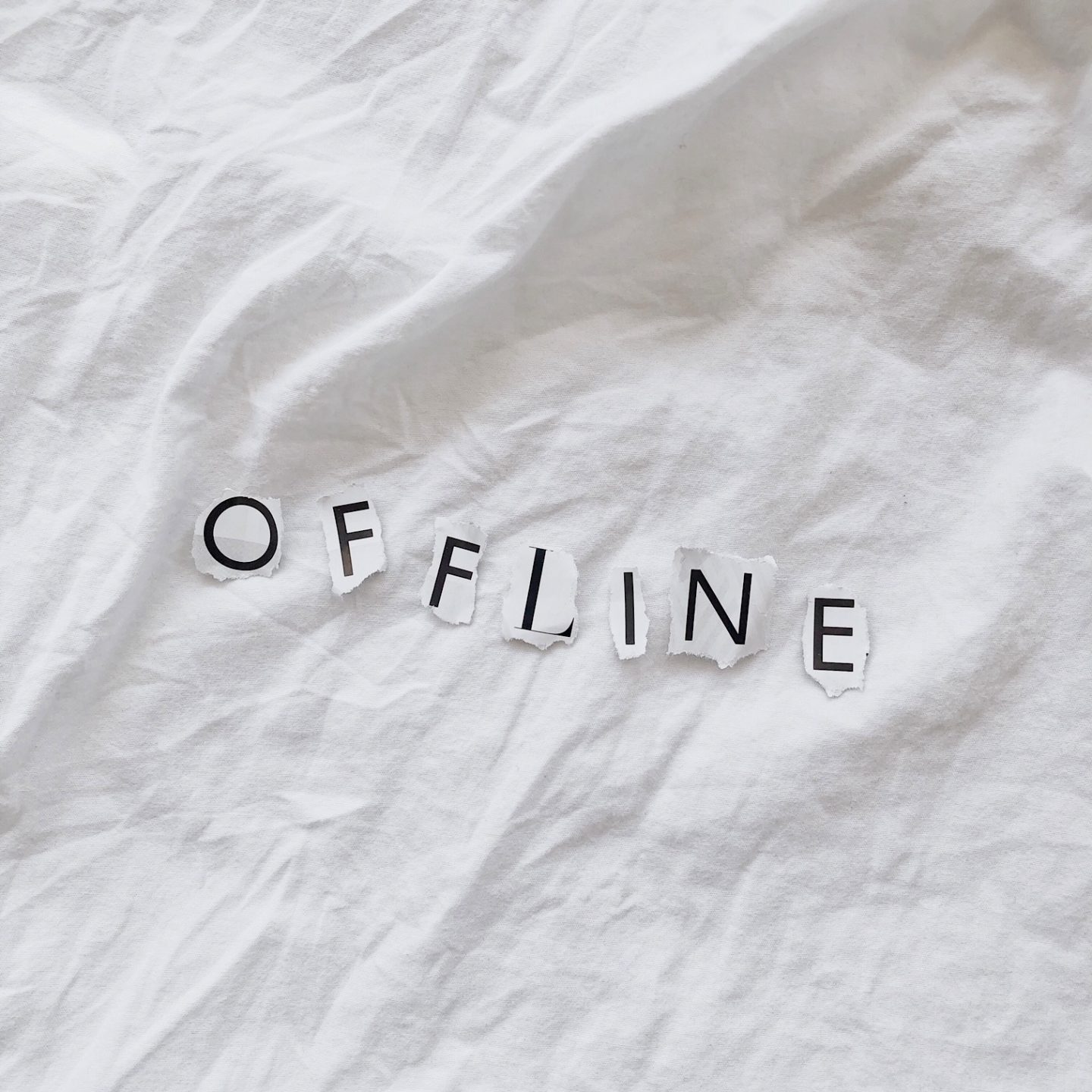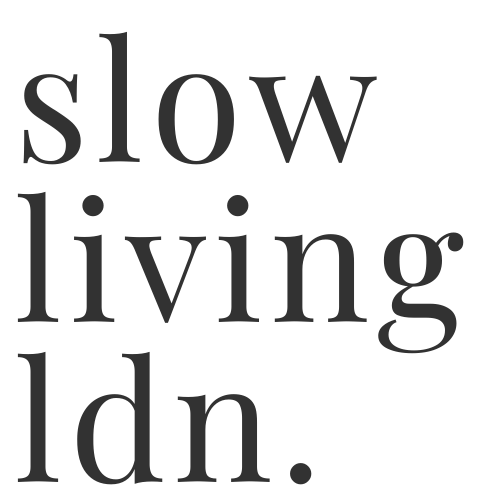You have no items in your cart. Want to get some nice things?
Go shopping
It was two years before the launch of the first iPhone in 2007, when Carl Honoré, often dubbed the godfather of the slow movement, first published In Praise of Slowness. Honoré was already highlighting a countercurrent brewing against the increase of speed in the working world, and specifically, the pressure to check email and voicemails outside of working hours.
Even those who first conceived smartphones couldn’t have predicted their impact on our lives, which now spans far beyond the realm of the working world. Quoted in Cal Newport’s powerful book, Digital Minimalism, Andy Grignon, from the original iPhone team, explains, “This (the first iPhone) was supposed to be an iPod that made phone calls”. There was no App Store and it was still three years before the launch of Instagram.
A decade and a half later and our phones are much more than devices to make calls or listen to music. Today, the world’s largest technology companies vie to keep us hooked on their apps and devices through a myriad of techniques used in the gambling industry. Cal Newport hits the nail on the head in Digital Minimalism: “We didn’t sign up for the digital lives we now lead. They were instead, to a large extent, crafted in boardrooms to serve the interests of a select group of technology investors.” This attention economy is big business with the social media industry alone now worth £2.1bn in the UK. And it’s not going anywhere.
“We didn’t sign up for the digital lives we now lead. They were instead, to a large extent, crafted in boardrooms to serve the interests of a select group of technology investors.”
Cal Newport
The Ever-Increasing Speed of Social Media Consumption
The average UK adult spends over three and a half hours online every day. Our youngest generations, many of which can’t remember a pre-smartphone existence, are spending the most time online according to Ofcom’s Online Nation 2021 report. Online screen time for 18 to 24-year-olds now averages at four hours and 34 minutes per day.
Screen time and digital technology use has only intensified during our recent experiences of national lockdowns, too. In April 2020, UK adults spent four hours and two minutes online per day, increasing by 37 minutes compared to April 2019.
As many looked to new sources of entertainment and ways to stay connected, TikTok boomed across the world. The app saw its highest ever download rate from January to March 2020, with 318 million first time installs worldwide. The platform, which only launched in 2017, has now pushed down the likes of Spotify and Netflix in the list of the top ten properties accessed by UK adults by average time spent per day. Entering the top ten for the first time in third place in September 2020, TikTok-ers were spending an average of 20 minutes on the platform each day.
The popularity of TikTok has driven competing social media sites to launch similar tools. In August 2020, Instagram launched ‘Reels’ and in November 2020, Snapchat launched ‘Spotlight’, both sections which highlight popular, short-form video content.
Aside from highlighting the fierce competition for our attention between social platforms, these new additions reveal that we consume these types of short form content much faster and more often. That’s compared to ‘considered’ types of social media that have a longer lifespan or are permanently posted to a feed. For example, every minute, 167 million TikTok videos are watched, compared to 65,000 new Instagram posts being shared and 240,000 photos being shared on Facebook, according to Statista.

In 2018, we asked Tanya Goodin, digital detox specialist, author and founder of Time To Log Off, about our smartphone use. Back then, Tanya likened our relationships to our devices to junk food binging. “Our smartphones are useful for so many aspects of our lives and there’s no doubt they save us time and make us more efficient and flexible in many ways,” she told us, “but so much of the time we spend online is that kind of mindless screen scrolling that’s a bit like grazing on junk food without really thinking about it. We need to cut down on the digital junk and use our screens in a way that’s healthy.” The rapid rate of consumption of video content on social media brings this analogy into even sharper focus.
Slow Tech and Slow Living: Methods and Concepts for Simplifying your Technology Use
We’re spending more and more time online, and tapping and flicking our way through an increasing amount of content in a single sitting. Knowing our apps and devices are designed to pull us in, how do we practise digital defiance and claim back our time? Let’s first be clear that technology use isn’t inherently negative, in fact moderate social media use for example, has been linked to higher wellbeing in children. But, reassessing your relationship with technology and what and how much you consume online is a key step in embracing a slower, more mindful lifestyle that prioritises what’s most important to you.
Digital Detox or Digital Declutter:
A digital detox is a set period of time when an individual purposefully switches off from digital devices and screens. It can be used as a habit circuit-breaker to reveal which technologies you’re overusing.
Digital Minimalism:
Coined by Cal Newport, digital minimalism is a highly personalised ‘philosophy of technology use’ which encourages individuals to be selective of which and how much of new technologies they use. This philosophy of simplifying acknowledges that there can be positives and negatives wrapped up into one digital tool or technology, so it’s important to break them down to be used in an intentional way which serves your values.
Slow Tech:
Similarly to digital minimalism, slow tech is about learning, possibly through a digital detox or declutter, which digital habits are not serving your purpose or values. Slow tech, which is part of the wider slow living movement, also recognises the need for regular switched off time as an antidote to our fast-paced lifestyles. This analogue time provides space for slow thinking, mindfulness and natural tendencies such as creativity.

“Digital minimalism definitively does not reject the innovations of the internet age, but instead rejects the way so many people currently engage with these tools”
Cal Newport
The concepts of slow tech and digital minimalism help you reclaim time for what’s most important to you. In SLOW, Brooke McAlary sums up a common paradox in our digital lives, “we enjoy telling others we’re busy. Too busy, in fact, for the things that are important to us, and isn’t that a shame? But can I honestly say that my priority is eating better if I have enough time to mindlessly scroll through social media and clickbait for an hour, but not enough time to cook?”.
“…can I honestly say that my priority is eating better if I have enough time to mindlessly scroll through social media and clickbait for an hour, but not enough time to cook?”
Brooke McAlary
Ultimately, while acknowledging its creators best efforts to make it addictive, how we use technology is a choice. We all have the ability to utilise it in a way that benefits us, rather than distracts us from what we find truly important. As Cal Newport says, “what we choose to focus on and what we choose to ignore—plays in defining the quality of our life.”
10 Tips to Spend Less Time on Your Phone
Tip 1. Check Your Phone’s Screen Time
Both Android and iOS devices have a built-in screen time report that tells you how many minutes and hours you spend on each app and can let you know if your usage was up week on week.
Take a look at your usage to work out where you’re spending more time than you’d like.
Tip 2. Turn Off Notifications
After you’ve determined which apps you’re opening most frequently, turn off notifications for these. Instead of being distracted every time you see a notification pop-up, you’ll have to manually open the app to check for updates.
Tip 3. Re-arrange Your Apps
We can often unconsciously click on apps when we’re bored or absent-minded. Make yourself more aware of mindless scrolling by reshuffling your apps. You will need to take a moment to remember where the app is, which may encourage you to question why you’re even looking for it.
Tip 4. Add Time Limits or Delete Apps
Is reshuffling your home screen not enough to stop you scrolling? Add screen time limits to your apps that remind you when you’ve spent your allocated time, or, delete them entirely. This works well for social media since you can still access the sites via your phone’s browser – but it’s much more effort to do so, that you probably won’t, or at least will be very aware if you do.
Tip 5. Go Gray Scale
Want to make your phone less enticing? Turn the display to gray scale and Instagram suddenly seems less appealing. To properly re-engage with your social feeds, you’ll need to turn colour back on. This is another barrier that aims to make you more aware of when you’re veering into mindless scrolling.
Tip 6. Use ‘Do Not Disturb’
Tempted to check your phone while watching a film or over coffee with a friend? Make use of your phone’s ‘Do Not Disturb’ feature, or even aeroplane mode, to help you stay in the moment and not become distracted. We often say we can multi-task, but usually neither action gets done properly. It’s about doing fewer things, but doing each thing better.
Tip 7. Go Phone-Free (Sometimes)
What’s even better than ‘Do Not Disturb’ mode? No phone at all.
Our phone is like an extension of our body – we feel lost when it’s not in our hand or pocket. Leaving your phone at home when going for a walk, or in another room when you want to focus on something else, helps lessen this digital dependency. Even if you felt a bit twitchy, when you pick up your phone again, you’ll probably find that nothing important happened in that short period.
Tip 8. Create a Phone-Free Bedtime
- Use an analogue alarm clock
- Don’t use your phone in the hour leading up to sleep
- Turn on night shift or equivalent to add a warmer, eye-friendly brightness setting to your screen in the evening
The blue light emitted from our screens can interfere with our circadian rhythm and prevent us from getting sleepy. For a better night’s sleep, avoid using your phone in the lead up to bed and avoid reaching for it at night or first thing in the morning.
Tip 9. Design a Phone-Free Morning
If you’ve created a phone-free bedroom, you’re half way to a phone-free morning, too. Allow yourself to properly wake up before getting lost in notifications and emails. Many have chosen to reclaim their mornings with exercise, meditation or other activities before they even check their phone.
Tip 10. Unplug during Meals
Even if you’re eating alone, phone-free mindful eating is a useful technique to become more aware of how we think about food and how quickly we’re eating, rather than chowing something down on autopilot.
The Benefits of Switching Off from Technology
Digital detox specialist Tanya Goodin highlights some of the benefits of unplugging from technology, “Putting our phones down and giving our attention unreservedly to the present moment pays so many dividends: it deepens and strengths our relationships and it makes us more mindful of, and appreciative of, what’s going on in our real lives. Making time to be off screen also helps us reconnect with ourselves, without screens to hide behind and escape into. Just a short period every day is all that’s needed to start reaping the benefits.”
- Creativity
- Better sleep
- Deeper connections
- More time
- Better focus
- Deeper, slower thinking
Resources to Help You to Unplug
- Digital Minimalism by Cal Newport
- Irresistible by Adam Alter
- My Brain Has Too Many Tabs Open by Tanya Goodin
- itstimetologoff.com
- digitaldetox.com
- Noises Off: Finding Focus in a World of Pandemic Brain and Techno-overload – Arianna Huffington
